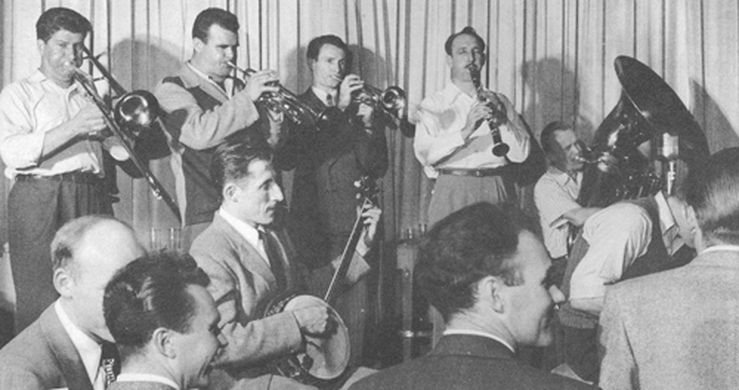15668. (Franz Josef Haydn) Trio for Piano, Violin and Cello in F, H.XV:2
15669. (Franz Josef Haydn) Trio for Piano, Violin and Cello in B‑flat, H.XV:8
15670. (Franz Josef Haydn) Trio for Piano, Violin and Cello in F, H.XV:6
15671. (Finger Eleven) Finger Eleven
15672. (Franz Josef Haydn) Trio for Piano, Violin and Cello in D, H.XV:7
15673. (Franz Josef Haydn) Trio for Piano, Violin and Cello in A, H.XV:9
15674. (Franz Josef Haydn) Trio for Piano, Violin and Cello in E Minor, H.XV:12
15675. (Dmitri Shostakovich) Symphony #2, Op.14
Read more »
Category Archives: CP - Listening 2006 - Page 3
First-time listening for May, 2006
Chubby Checker
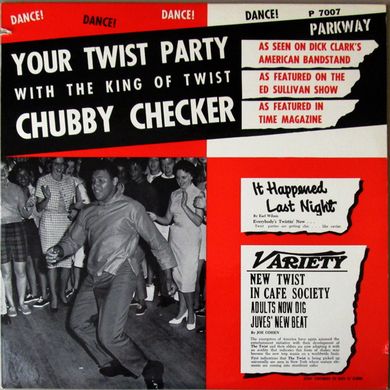 Ernest Evans (stage name “Chubby Checker”, a spoof of “Fats Domino”) is an example of a perfectly competent singer who might have had a long and highly respected career, if not for the fatal popularity of one hit tune. He is the only recording artist to have five albums in the Top 12 all at once. He is the only artist to have a song reach #1 twice, with the dreaded “Twist”. I am listening to that sad little item on the original Parkway album, Your Twist Party, in its 1961 Canadian pressing — a nice little rarity in my vinyl collection. “The Twist” was nothing but a little ditty that triggered a brief dance craze, but it branded Checker as the musical equivalent of hoola hoops, and he was never permitted to sing much of anything else again, and never taken seriously. This is the saddest aspect of show business. In some ways, utter failure offers some dignity. To be briefly worshiped for some lame, trivial accomplishment, then cast aside and mulched back into the earth must be utterly humiliating. Checker’s singing was quite stylish, and some of his performances of rock-and-roll and show standards on this album, such as “Ballin’ the Jack”, “Blueberry Hill” and even “I Could Have Danced All Night” show that he could have been a long-term success.
Ernest Evans (stage name “Chubby Checker”, a spoof of “Fats Domino”) is an example of a perfectly competent singer who might have had a long and highly respected career, if not for the fatal popularity of one hit tune. He is the only recording artist to have five albums in the Top 12 all at once. He is the only artist to have a song reach #1 twice, with the dreaded “Twist”. I am listening to that sad little item on the original Parkway album, Your Twist Party, in its 1961 Canadian pressing — a nice little rarity in my vinyl collection. “The Twist” was nothing but a little ditty that triggered a brief dance craze, but it branded Checker as the musical equivalent of hoola hoops, and he was never permitted to sing much of anything else again, and never taken seriously. This is the saddest aspect of show business. In some ways, utter failure offers some dignity. To be briefly worshiped for some lame, trivial accomplishment, then cast aside and mulched back into the earth must be utterly humiliating. Checker’s singing was quite stylish, and some of his performances of rock-and-roll and show standards on this album, such as “Ballin’ the Jack”, “Blueberry Hill” and even “I Could Have Danced All Night” show that he could have been a long-term success.
Eduard Artemyev, Stanislav Kreichi, Alexander Nemtin, Shandor E. Kallosh
Moscow’s University’s Theramin Center preserves the only existing ANS photo-electronic musical instrument. The ANS (named after the initials of Scriabin), worked on the principle of reversing the normal process by which music is recorded on film soundtracks. A handful of Soviet composers clustered around this obscure project in the 1960s, and most of them subsequently became famous as orchestral or film score composers. This was during the “loose” period of Krushchev’s regime, when lots of creative projects flourished in obscure corners or science, music and academia.
There is currently a CD release from Electroshock Records, Electroshock Presents: Electroacoustic Music Volume IV: Archive Tapes Synthesizer ANS 1964 – 1971, which covers this period. There is an excellent, detailed review of it on the entertaining and informative site of Ingvar Loco Nordin*, an experimental music fan in Nykoping, Sweden. Navigate his site from there, because it contains lots of leads to interesting electronic and experimental music. Nordin notes that many of the pieces sound like they were lifted from a vinyl recording, and it happens that I have the original vinyl. It is a small-format Melodiya album with works by Artemyev, Kreichi, Nemtin, Kallosh composed on the ANS synthesizer. All of these men subsequently flourished as composers, mostly in film music. Artemyev is particularly known for his scores for Tarkovsky films. The most ambitious work on the record is a soundtrack item for the film “Cosmos”, a collaboration of Artemyev and Kreichi. However, a short piece by Kallosh, “Northern Tale’, strikes me as the most inventive. Most of these pieces still hold up fairly well, even though anyone could now easily synthesize similar sounds on their computer. A plodding, murky treatment of a Bach chorale prelude is an embarrassment, but everything else holds up well as music.
*Nordin’s site is no longer active.
Ivan Skobtsov (1900–1983)
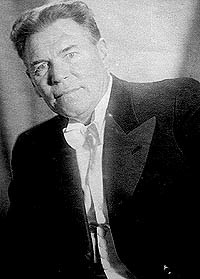 Ivan Skobtsov was an operatic bass at the Bolshoi for 28 years, but his real achievement was as an interpreter of Russian folk song. The small format 33&1/3 Melodiya album in my collection has only six songs, with unpretentious accordion arrangements. From its disc number, I would guess it dates from the late 1960s or early 1970s. The songs are mostly dark, tragic, or plaintive, of course.… … totally Russian.
Ivan Skobtsov was an operatic bass at the Bolshoi for 28 years, but his real achievement was as an interpreter of Russian folk song. The small format 33&1/3 Melodiya album in my collection has only six songs, with unpretentious accordion arrangements. From its disc number, I would guess it dates from the late 1960s or early 1970s. The songs are mostly dark, tragic, or plaintive, of course.… … totally Russian.
First-time listening for April, 2006
15574. (Yeah Yeah Yeahs) Fever To Tell
15575. (Matt Dusk) Two Shots
15576. (Wailin’ Jennys) 40 Days
15577. (Ludacris) Chicken-N-Beer
15578. (Gordon Downie) Battle of the Nudes
15579. (Anton Bruckner) Mass #1 in D Minor Read more »
Lu Watters’ Yerba Buena Jazz Band
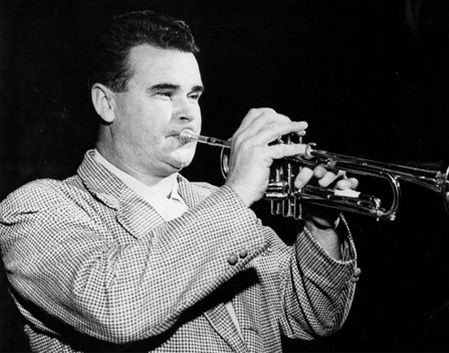 Fortunately, this 1955 recording on a small California label is in good condition. It preserves some of the little-remembered “San Francisco Sound” of the early 1940s. In a time when the swing and big band sounds dominated, a minority of jazzmen sought to revive the more intimate sound of Dixieland. There were three localizes “schools” of this “back to the basics” movement: one in New Orleans, another in Chicago, and a third in San Francisco, lead by Lu Watters and Turk Murphy. The 1941 and 1942 sessions on my disc, recorded on Van Ness Avenue in San Francisco, have Lu Watters and Bob Scobey on cornets, Turk Murphy on trombone, Ellis Horne on clarinet, Wally Rose on piano, Quire Girsback on tuba, Bill Dart on drums, and two banjo players, Clacy Hayes and Russ Bennett. The interplay is between Watters, Murphy and Horne (whose clarinet is particularly sweet). Watters was most influenced by King Oliver’s band, with Louis Armstrong, in its heyday, but there are also echoes of W. C. Handy and Jelly Roll Morton. Some of the material they played was virtually antiquarian even in 1941: they do an excellent, slow-paced version of the Tiger Rag, a piece that can be traced to the French quadrilles of Old New Orleans. The San Francisco sound featured banjo and tuba in the rhythm sections, which played in a 2‑to-the-bar rhythmic style. There was a lighthearted “good time” feeling to it, which distinguishes it from the more plaintive sound of the New Orleans revival.
Fortunately, this 1955 recording on a small California label is in good condition. It preserves some of the little-remembered “San Francisco Sound” of the early 1940s. In a time when the swing and big band sounds dominated, a minority of jazzmen sought to revive the more intimate sound of Dixieland. There were three localizes “schools” of this “back to the basics” movement: one in New Orleans, another in Chicago, and a third in San Francisco, lead by Lu Watters and Turk Murphy. The 1941 and 1942 sessions on my disc, recorded on Van Ness Avenue in San Francisco, have Lu Watters and Bob Scobey on cornets, Turk Murphy on trombone, Ellis Horne on clarinet, Wally Rose on piano, Quire Girsback on tuba, Bill Dart on drums, and two banjo players, Clacy Hayes and Russ Bennett. The interplay is between Watters, Murphy and Horne (whose clarinet is particularly sweet). Watters was most influenced by King Oliver’s band, with Louis Armstrong, in its heyday, but there are also echoes of W. C. Handy and Jelly Roll Morton. Some of the material they played was virtually antiquarian even in 1941: they do an excellent, slow-paced version of the Tiger Rag, a piece that can be traced to the French quadrilles of Old New Orleans. The San Francisco sound featured banjo and tuba in the rhythm sections, which played in a 2‑to-the-bar rhythmic style. There was a lighthearted “good time” feeling to it, which distinguishes it from the more plaintive sound of the New Orleans revival.
Giovanni Bottesini (1821–1889)
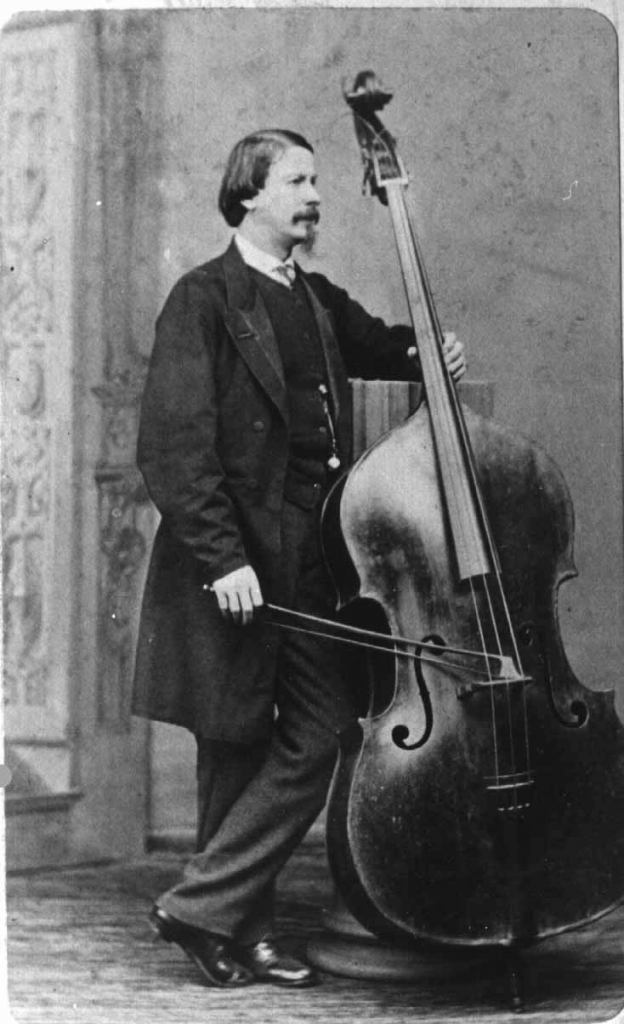 Forgotten by all but concert double-basists, Bottesini was the most renowned soloist and composer on that instrument in the nineteenth century. An Italian from Lombardy, he worked variously in America, Cuba and England. Much of his music sounds like Brahms or Schumann, and not much of it is strikingly original, but most of it is quite pretty. I have twelve pieces, ten ot them slight [an Allegretto Capriccio, an Allegro di Concerto “Alla Mendelssohn” , a Bolero, a Capriccio di Bravura, three Elegies, an Introduction and Gavotte, a Melodia, and a Rêverie, all for Double Bass and Piano]. Two more are fairly serious works. The Concerto #2 in B Minor would be well known if it was for cello. It’s as good as many cello concertos in standard repertoire. Best of all is his Gran Duo Concertante for Violin and Double Bass, which was originally scored for two basses. It is an intelligent work, and I suspect that I would prefer it in its original form. However, the version with violin seems to be the only one available.
Forgotten by all but concert double-basists, Bottesini was the most renowned soloist and composer on that instrument in the nineteenth century. An Italian from Lombardy, he worked variously in America, Cuba and England. Much of his music sounds like Brahms or Schumann, and not much of it is strikingly original, but most of it is quite pretty. I have twelve pieces, ten ot them slight [an Allegretto Capriccio, an Allegro di Concerto “Alla Mendelssohn” , a Bolero, a Capriccio di Bravura, three Elegies, an Introduction and Gavotte, a Melodia, and a Rêverie, all for Double Bass and Piano]. Two more are fairly serious works. The Concerto #2 in B Minor would be well known if it was for cello. It’s as good as many cello concertos in standard repertoire. Best of all is his Gran Duo Concertante for Violin and Double Bass, which was originally scored for two basses. It is an intelligent work, and I suspect that I would prefer it in its original form. However, the version with violin seems to be the only one available.
First-time listening for March, 2006
15513. (Good Charlotte) The Chronicles of Life and Death
15514. (Flaming Lips) Yoshimi Battles the Pink Robots
15515. (Alessandro Stradella) Sinfonia avanti il Barcheggio in D for Trumpet, String
. . . . . Orchestra, Trombone and Harpsichord
15516. (Alessandro Stradella) Sinfonia in A Minor for Two Violins, Celli, Double-Bass, Lute
. . . . . and Harpshichord
15517. (Alessandro Stradella) Sonata a quattro in D for Double Orchestra
Read more »
Edgar Meyer
I’ve always been a sucker for low-register instruments. A cello or a viola da gamba will move me much more easily than any violin, and I get all dreamy if I hear a contrabassoon even tuning up. Edgar Meyer is widely regarded as the finest double-bassist alive. But I will consider him here as a composer. Now, many terrific solo performers have given forth embarassing turkeys when they turned to composing, but this is not the case with Meyer. His Double Concerto for Cello and Double Bass, which he performs with the inimitable cellist Yo-Yo Ma, has none of the surly chugging along you expect from the instrument. It’s a sprightly composition, with pleasant melodies, and some sarcastic passages that Prokofiev would be proud of. The Concerto in D for Double Bass and Orchestra, is downright weird. It starts with little wafted fragments of melody, resolving them every now and then into an orchestral tutti, and plays little games of syncopation and call-and-answer. The second you think you know where the piece is headed, it twists out of it like a wrestler breaking a Boston crab grapevine leg lock. It eventually drifts into a slightly sinister and puzzling ending. The overall effect is surprisingly pleasing.
Meyer is a long-time friend of folk banjo virtuoso Béla Fleck, and they’ve put out an album together that I’m most eager to hear. If anyone out there has heard it, send me a review. The two concerti are together on the CD Meyer and Bottesini Concertos, along with two works by the 19th century Lombard composer, Giovanni Bottesini, whose music I’ll discuss next.
Tuesday, March 7, 2006 — Thinking of Timbuktu
 Something made me think of Timbuktu, today. For a moment, I could smell the wind-blown sand, the acacias, the drying dung. For a moment I could hear snorting camels, the rapidfire street-talk in Chiini, the wailing muezin, the griots playing gurkels and koras, the slender Fulani traders walking like gods through the market place, jaunty in their conical hats. Fabled Tombouctou, the name itself has come to mean “far away and unreachable”. Sad Timbuktu, the fading shadow of an ancient greatness.…“Salt comes from the north, gold from the south, but the wealth of wisdom comes from Timbuktu.” Few can now read the manuscripts from its centuries-old libraries, and the children who tumble out of the Lycée may not care about their loss. Outside the city, the monstrous sand dunes march southward, threatening to swallow what’s left of the city, like so many others that have sunk and drowned and vanished into the sand sea. Years of war among the desert nomads, ended only by uneasy truce in the late nineties, did not do it any good. Nor did decades of exploitation and brutality by a parasitic Marxist aristocracy, before that. Read more »
Something made me think of Timbuktu, today. For a moment, I could smell the wind-blown sand, the acacias, the drying dung. For a moment I could hear snorting camels, the rapidfire street-talk in Chiini, the wailing muezin, the griots playing gurkels and koras, the slender Fulani traders walking like gods through the market place, jaunty in their conical hats. Fabled Tombouctou, the name itself has come to mean “far away and unreachable”. Sad Timbuktu, the fading shadow of an ancient greatness.…“Salt comes from the north, gold from the south, but the wealth of wisdom comes from Timbuktu.” Few can now read the manuscripts from its centuries-old libraries, and the children who tumble out of the Lycée may not care about their loss. Outside the city, the monstrous sand dunes march southward, threatening to swallow what’s left of the city, like so many others that have sunk and drowned and vanished into the sand sea. Years of war among the desert nomads, ended only by uneasy truce in the late nineties, did not do it any good. Nor did decades of exploitation and brutality by a parasitic Marxist aristocracy, before that. Read more »
